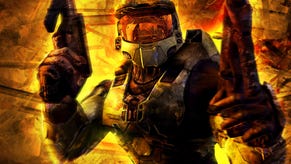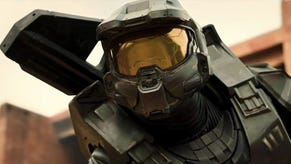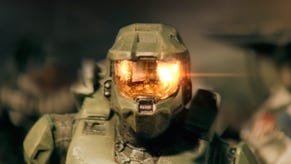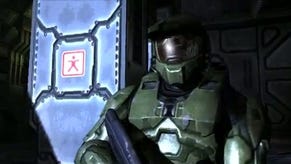Better Than Halo: The Making of Halo 2
As Microsoft prepares to switch off Xbox 1, Bungie reveals the painful birth of the game that defined Xbox Live.
On April 14th, the Xbox Live service for the original Xbox shuts down for the final time. It takes with it the multiplayer support for Halo 2 - the game which showed the world how console multiplayer should be done, and proceeded to dominate the Xbox Live stats for years. Eurogamer took the opportunity to speak to the team behind the game, and discover the tortured development process behind a modern classic.
It's hard to remember that there was a time when Halo wasn't a colossus of the games industry. These days, updates to Bungie's epic science fiction franchise punctuate the release schedule for the Xbox 360 like exclamation points - it's a pillar of the platform, the game series that brought credibility to both the Xbox itself and to the Xbox Live service. Its hero, the Master Chief, is an iconic figure in pop culture, and the series is one of the most popular online games in history - with Halo 3 still being played by huge numbers of people every night, despite the meteoric success of games like Modern Warfare.
It was not always thus. Today, Halo: Combat Evolved is remembered as being the tentpole that supported the whole Xbox launch, the cornerstone around which Microsoft built its entire console business - but Jaime Griesemer, who was a design lead on Halo 2, says that at the time, things weren't so certain.
"We were under pressure to prove ourselves and the game," he recalls. "We had some early previews with really bad framerate, a lot of disappointment that we had changed platforms, and an enormous amount of scepticism that you could make a good FPS on a console. Expectations were so low that the Microsoft marketing people were talking about putting their money behind other launch titles."

They didn't, of course, and the rest is history. Halo launched in November 2001, and was a critical and commercial success of almost unprecedented scale - achieving one of the highest Metacritic scores in history, with almost universal acclaim from reviewers (Eurogamer is mocked to this day for awarding it 8/10, the "low" score probably reflecting the site's roots in PC FPS gaming more than anything else). Half of all Xbox consoles sold for months after launch were sold alongside a copy of Halo. By April 2002, a million copies had been sold.
As the sales figures mounted, Bungie knew that Halo wasn't just a game any more. They had a franchise on their hands.
"We didn't plan Halo as a trilogy," explains Joseph Staten, who was writer and cinematic director of Halo 2. "But during Halo 1 development, we certainly had strong ideas for extending the story and gameplay experience that we knew we couldn't fit into one game. Success brings creative freedom but also heavy expectations; when we started brainstorming for Halo 2, we knew we had publisher support to execute on these deferred, more ambitious ideas."
As work on a sequel began, the team started thinking about where it wanted to go next with its newly created franchise - and, perhaps more importantly, where it hadn't been able to go with Halo: Combat Evolved. "Your initial goals with a sequel are always the same," says Griesemer, "to finish all the stuff you had to cut from the first game. And we had to cut a lot from Halo 1, so we had a lot of ideas we were ready to move on."









